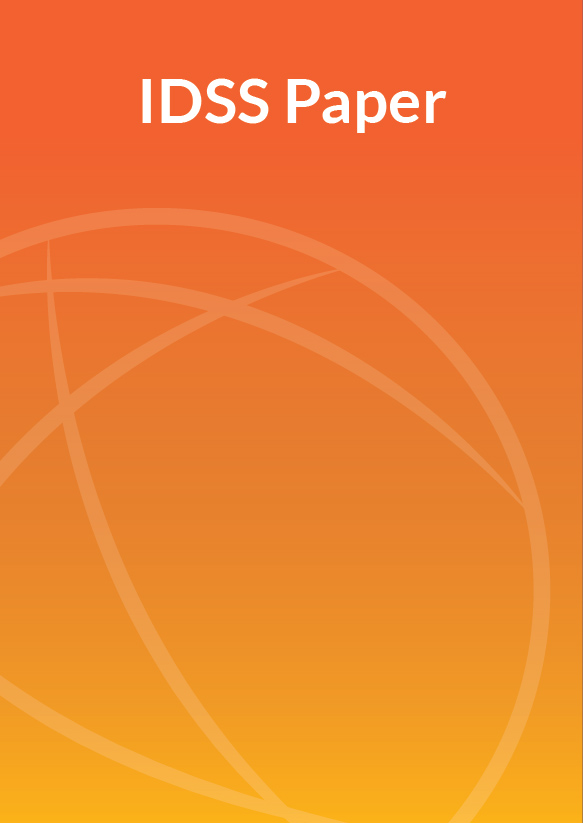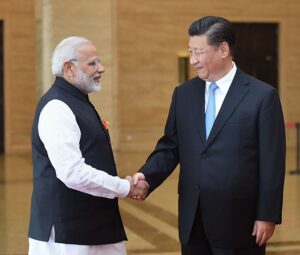Sinderpal Singh

On 13 December 2022, India’s defence minister informed the Indian parliament about border clashes four days earlier between Indian and Chinese troops in the Tawang sector, part of a disputed swathe of land which includes the entire Indian-administered state of Arunachal Pradesh. This set of border clashes can be traced back to stand-offs between the two sides since 2013, with further reported clashes at Doklam in 2017 and the Galwan clashes in 2020, which led to reported deaths on both sides. Although the crisis ended quickly, tensions remain and hostilities could break out again.
This paper discusses Indian perceptions of China’s approach to the disputed border within the broader framework of India-China relations. It outlines how Indian policymakers have responded based on these perceptions as well as possible future options for India in relation to China.
Perception 1: China bases its responses to India largely on China’s relationship with the United States
Indian policymakers have long sought to frame relations with China on the basis of parity. Nehru’s idea of India and China as two ancient Asian civilisations, with comparable proud histories and comparable experiences of being exploited and humiliated by the “West”, led to his articulation of Asian solidarity at the Bandung Conference in 1955. The 1962 border war between the two states shattered this position but Indian policymakers have persisted in drawing such parallels between India and China.
However, over time, Indian policymakers began to perceive China’s policy towards India as a subset of China’s relationship with the United States. China, in this rendition, does not view India as a significant actor on its own but instead only as a variable in China’s relationship with the United States. The sporadic mention of India in China’s state-controlled media as well as in the memoirs of Chinese leaders, past and present, confirms this perception.
In this interpretation, China’s perceived transgressions along the disputed border with India stem from China’s assessments of India’s role in China-US relations. Thus, what drives China’s policy towards India is a deterioration of China’s relations with the United States and an assessment of closer US-India ties, rather than any direct Indian policy articulation or action towards China. Based on such a perception, the Indian political leadership has since 2014 attempted to craft a strategic compact with China to reduce the threat posed to India along their disputed border.
This compact involved two key parts. The first involved assuring China of India’s strong tradition of strategic autonomy and its disinclination to be a junior partner in Washington’s attempts to build an anti-China bloc. To drive home this point, India has asserted its capacity for developing closer relations with other states on its own terms, and not on terms expected by either China or the United States. This was meant to assure China that India was an autonomous actor and to provide China incentives to relate to India directly, and not primarily through China’s perceptions of US strategies and actions.
Secondly, India sought to project a dose of clear realism in its strategy towards China. It wanted to make clear that India accepted China as a strategic competitor in the South Asian region and the wider Indian Ocean region, but that this competition should not translate into rivalry. To complement this strategic rivalry, Indian leaders wanted to assure China of India’s desire to maintain economic relations between the two states, and even to look for ways to improve such ties for mutual benefit. The two informal summit talks between Narendra Modi and Xi Jinping, first in Wuhan, China, in 2018 and then in Mamallapuram, India, in 2019, were India’s opportunity to make this Indian position clear. This suggested strategic compact also meant both sides would respect the status quo along their disputed border, even if resolving it in the near future was not realistic.
 Indian Prime Minister Narendra Modi and Chinese President Xi Jinping at the Wuhan, 2018 informal summit. Relations between both countries have since soured, with the re-emergence of border clashes in the Tawang Sector of the Indian province of Arunachal Pradesh. Image from Wikimedia.
Indian Prime Minister Narendra Modi and Chinese President Xi Jinping at the Wuhan, 2018 informal summit. Relations between both countries have since soured, with the re-emergence of border clashes in the Tawang Sector of the Indian province of Arunachal Pradesh. Image from Wikimedia.However, this Indian strategy of convincing China of the benefits of treating India as an autonomous strategic actor seems to have failed. Indian leaders view China’s attempts to change the status quo at the border as tantamount to its rejection of India’s efforts to frame such a strategic compact. They see China’s leaders as keen to exploit China’s perceived advantage along the disputed border instead. China’s actions at the border reinforce India’s perceptions that such actions are meant as responses to India’s growing strategic ties with the United States and with US allies.
Perception 2: China assumes that it has a significant military advantage along the border and that a third country like the United States would not directly come to India’s aid to redress this imbalance
Indian policymakers believe Beijing’s cognisance of China’s military advantage along the border, specifically along the Line of Actual Control (LAC), gives it the confidence to attempt changes to the status quo. Adding to China’s confidence is its calculation that the United States would not get directly involved at the border to redress the Indian disadvantage. In fact, India believes that China’s leaders are aware that India itself would not want the United States to get militarily involved on the Indian side of the border. Indian policymakers have not even encouraged official US statements on India-China border clashes, much less direct US involvement.
The Indian response to this perception has been to rapidly develop border infrastructure to allow easier deployments and logistics access for India’s military. India has also deployed recently acquired US-made weaponry at the border to bolster its force capability. In addition, it has re-deployed six army divisions from its northern border with Pakistan to its border with China. These steps are intended to lessen the perceived Chinese advantage and consequently dissuade China from making frequent attempts to change the status quo along the border.
However, India’s attempts to redress its disadvantage at the border are happening in the context of China’s own border infrastructural efforts. There have been reports, since 2021, of China building “villages” along its disputed border with India, and Indian policymakers perceive these efforts as a means for China to further push its claims along the disputed border, with roads and bridges leading close to the LAC.
Perception 3: China believes its grey zone tactics on the border will be effective over the longer term as India is reluctant to escalate localised stand-offs into a wider conventional confrontation
Indian leaders view China’s actions on the border as part of a wider Chinese strategy of using grey zone tactics — activities short of war — for longer-term advantage. In this view, China uses shifting border posts by populating areas closer to the LAC, in tandem with the deployment of unarmed Chinese troops, to incrementally shift the status quo in its favour over the longer term. India believes that China views such actions as imposing both strategic and domestic political costs for Indian leaders without the risk of any significant costs to China itself. In this view, China assumes that Indian leaders are highly reluctant to escalate border stand-offs into a wider conventional confrontation with China, either at the border or within the Indian Ocean region.
However, the more recent Indian debate on this issue, especially among academics and think-tanks in Delhi, suggests that India has considered pushing back against China at the border through a limited conventional military response. Similar to the case with Pakistan, where sub-conventional conflict had benefited Pakistan over India since the late 1990s until India’s recent decision to respond via limited air strikes after the Pulwana attacks in 2019, there is growing discussion in Delhi about the utility of a conventional but limited military response at the border with China.
This, of course, is seen as a risky endeavour given the costs of escalation, especially against a militarily superior China. However, several observers in Delhi feel that China, just like India, would not be interested in an escalation of conflict and would keep any conventional military conflict limited to the border. Proponents of this view believe a limited conventional military response would impose higher costs for China’s grey zone tactics at the border and thus make China re-examine the utility of this strategy at the India-China border.
Conclusion: What to do with China?
Since 2014, the Modi-led government has attempted to re-shape some fundamental aspects of India’s foreign relations, and policy towards China has been a key aspect of this enterprise. However, its attempts to craft a strategic compact with China have not changed the nature of China’s threat to India at their common border.
There are signs that Indian responses will increasingly become militarily more proactive rather than reactive at the border, resulting in an increased chance of a repeat of the 1962 war between India and China, this time among two nuclear weapon states. In such an eventuality, the fallout may not stop at the India-China border but may resonate further afield in Asia, directly impacting more countries than in 1962.

No comments:
Post a Comment